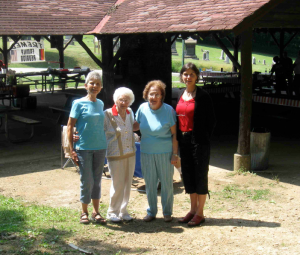 There are advantages to multi-generational living that one does not experience while living independently.
There are advantages to multi-generational living that one does not experience while living independently.
In my last blog post I talked about communicating effectively. It’s especially helpful to use compassionate communication when living in multi-generational situations because it lends itself toward solving problems rather than creating them.
Whether you like it or not, problems happen all the time. You have choices:
a.) Create more problems.
b.) Create fewer problems.
c.) Solve problems.
Which scenario(s) do you choose? Be honest.
Communicating effectively creates fewer problems and solves many problems. When you learn to identify what you’re feeling and needing, and express it in a nonjudgmental way, with a request attached, rather than a demand, you are more likely to get your needs met.
Here’s an example:
An elderly parent climbs onto a piece of furniture to capture and kill a bug that’s up high on a wall. You say, “I feel worried when you do that because I have a need for safety. Would you be willing to consider asking me to do that in the future? Or, if I’m not around, would you be wiling to use a fly swatter, rather than climbing up on a chair and getting on your dresser?”
In summary: State what you observe — what you see or hear — without judgment. Then express your feelings and needs. Next, make a clear request — versus a demand.
One more thought: You may need to use the “broken record” technique if the person continues to carry out the worrisome behavior. Just simply repeat your feelings-and-needs statement with a clear request.
Good luck! And enjoy.
